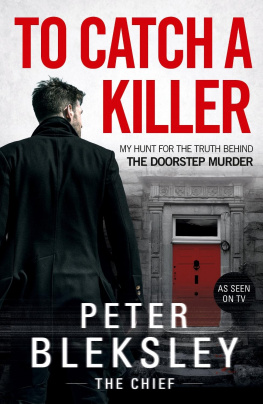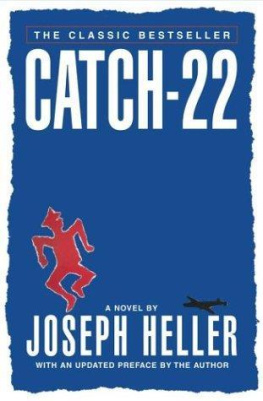
Published in the United States of America and Great Britain in 2012 by
CASEMATE PUBLISHERS
908 Darby Road, Havertown, PA 19083
and
10 Hythe Bridge Street, Oxford, OX1 2EW
Copyright 2012 Patricia Chapman Meder
ISBN 978-1-61200-103-6
Digital Edition: ISBN 978-1-61200-115-9
Cataloging-in-publication data is available from the Library of Congress and the British Library.
All rights reserved. No part of this book may be reproduced or transmitted in any form or by any means, electronic or mechanical including photocopying, recording or by any information storage and retrieval system, without permission from the Publisher in writing.
10 9 8 7 6 5 4 3 2 1
Printed and bound in the United States of America.
For a complete list of Casemate titles please contact:
CASEMATE PUBLISHERS (US)
Telephone (610) 853-9131, Fax (610) 853-9146
E-mail:
CASEMATE PUBLISHERS (UK)
Telephone (01865) 241249, Fax (01865) 794449
E-mail:
__________________
Photos are from the author's private collection, unless otherwise noted.
All excerpts from Joseph Heller's Catch-22 (1961 edition) that are reproduced in this book were done so with permission from Simon & Schuster and Mr. Heller.
CONTENTS
DEDICATION
My father, Bill, my modelfor setting goals and accomplishing them.
My mother, Charlotte, gracious, elegant and always in my corner.
My sister, Sue, the other half of my heart.
My son, Jason, brilliant and compassionate with the ability to be a game changer.
My husband, Jim, my rock solid and loving support throughout everything.

FOREWORD BY SCOTT CARPENTER
A mong the vast wealth of literature that emerged from World War II, none has stood the test-of-time better than Joseph Heller's first novel, Catch-22. A black-comic masterpiece, written from firsthand experience, it has resonated with half a century of readers since, providing timeless insights into the human psyche.
The men of Joseph Heller's 340th Bomb Group had very serious and dangerous jobs to do, and it is this that makes these same men and events such fertile grounds for satire. They flew 898 combat missions in B-25 Mitchell bombers until the surrender of Germany in 1945. Every time they boarded their aircraft, there was a very real risk of not returning. In my experience as a naval aviator and Mercury astronaut I am familiar with the risks they took flying into the unknown.
Heller himself was a kid from Brooklyn, when he suddenly found himself the bombardier on a B-25 Mitchell based in Italy. Surrounding him were farm boys, shoemakers, factory workers and prospective teachers. But now they were flyers in combat with their German counterpartsmost likely also naive young men of different backgroundstrying to shoot each other down.
Joseph Heller was able to identify the immense ironies in his situation, and Catch-22 captured the absurdities from the start. As I read Catch-22, I respected the humor. I also respected the difficulty of the training for such dangerous situations that was required for the accomplishment of the mission. The humor was based largely on the desire to step away from the complexity and stress of those missions and mitigate the feelings that each mission might be one's last.
Along with me in the Mercury Seven was Deke Slayton. Deke had flown 56 combat missions in Europe with the 340th Bomb Group. Eventually he and his war comrades were able to laugh at and respect the humor of Catch-22, but because of the seriousness of their roles in World War II, they did not always appreciate it.
In interviews after his novel was published, Heller sometimes denied that the characters in his work were based on real persons. And here is where the current work, The True Story of Catch-22, provides an invaluable service to all readers of World War II literature. Patricia Chapman Meder, daughter of the commander of Heller's 340th Bomb Group, has intensely researched her father's wartime career, corresponded with other intimately involved veterans, and Heller himself, to solidly establish that Catch-22 was indeed based on reality
The results of her research in these vividly written pages, has been revelatory. Catch-22 was by no means a flight of Heller's imagination, but in very large part the true experience of our citizen-soldiers who were suddenly assigned combat tasks the world had not seen before. The real-life story of the men in Heller's Bomb Group is more fascinating than the novel. After all these years we now find that the novel was based on real people and not just caricatures or figments of imagination.
In real life, the courage, and humor, of our young fliers in World War II stands as even more impressive than their fictional depictions. Heller's sharp satiric eye has been a subject of fascination for generations. Let's hope that the story of the real young men from whom he gained his inspiration are also kept in mind, for it was their own camaraderie, idiosyncrasies, and courage at that time of deep patriotic need that made the original novel possible. In these pages it is a great pleasure to finally see the real story behind the fictionalized account, and to be even more impressed.
Fact is indeed better than fiction and this book is a great read about fact.


INTRODUCTION
I slid into the passenger's seat of his new red 1962 VW and we set out for the 6th arrondissement in Paris. He eased into the traffic, quickly adapting to the French method of survival driving as a slight motocyclette carrying a bouffant-haired, mini-skirted femme, perched sidesaddle and plastered bosom-to-back to whoever was in front, darted around us. He pointed to the small, recently published, book between us.
Take a look at what I'm reading; just read the first page.
As the opening sentence warned, It was love at first sight.
A few days later he loaned it to me with a bit of a grin saying, I think this might be your Dad's World War II outfit. And there began my lengthy on-again, off-again journey with the phenomenal Catch-22.
I came from a military family actually, generations of military family and my older sister, Sue, and I grew up with its expectations, inconveniences, privileges, and responsibilities. From my earliest memories the effects of WWII have been a part of my life. I can remember toying with my food and Dad, zeroing in on me with spoon raised high, saying Bombs away! or Open the bomb bay! or Down the hatch! Having been alive a mere four years, I was clueless to the phrases, of course, but I knew the expectations: Open wide and the food will make a direct hit.
Over the years I have absorbed, almost by osmosis, stories and accounts by my father, final commander during World War II of the 340th Bomb Group, a senior pilot, a rated navigator, a rated bombardier, and an observer. Upon undertaking this book, I sifted through his copious, museum-worthy war materials; much of it formerly classified Secret. I interviewed the men involved in the now-famous 340th Bomb Group depicted in
Next page









